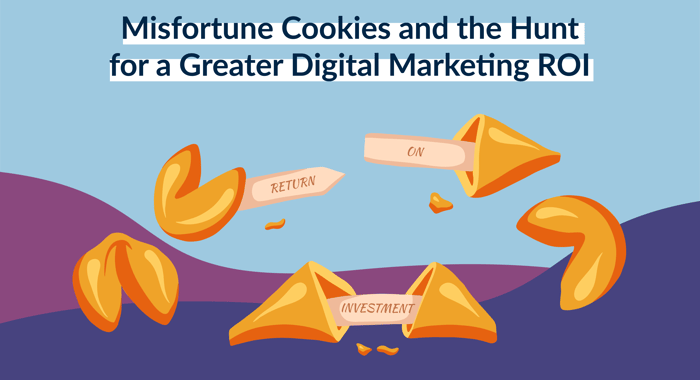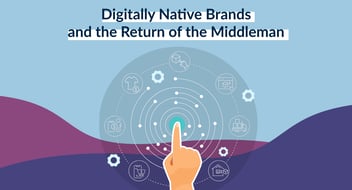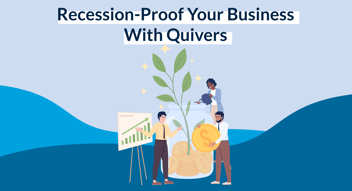CEO CORNER: Misfortune Cookies and the Hunt for a Greater Digital Marketing ROI

“Have you ever clicked your mouse right HERE?”
“YOU WILL”
This cryptic, and somewhat threatening, message formed the first-ever clickable banner ad, back in October 1994. Curiosity got the better of 44% of hotwired.com visitors and AT&T was on to a winner.
For a long time, ads like this would form the backbone of the digital marketing industry, but recent legislative and privacy-driven changes have sown doubt on their continued use. Traditional tactics are becoming increasingly less effective, forcing marketers to explore new and innovative ways to connect with their audience.
The Slow Death of the Cookie
Cookies changed the digital world when they were invented in 1992. Named after fortune cookies — which also carry an embedded message — this simple invention paved the way for the digital advertising revolution.
While cookies have played a large part in making the digital marketing industry worth over $600 billion, their days are numbered. With increased public concern for privacy, laws such as the European General Data Protection Regulation (GDPR) — which requires websites to allow European visitors to reject third-party cookies — are beginning to reflect changing attitudes. Whether as a result of public demand or anticipating further legal hurdles, Apple, Google, and Mozilla have all begun the process of phasing out support for third-party cookies.
In the midst of such big changes, ad platforms are doing their best to adapt. There’s recognition that relying on data from websites is only one part of the puzzle: Utilizing on-platform data collected from consumers visiting social media pages may now be more dependable. Reflecting these changes, Google has pushed users towards GA4, its updated analytics tool designed to track consumer behavior in the evolving digital landscape.
Make no mistake: Targeted ads aren’t going away any time soon, but they’re unlikely to perform as well as they have in the past. The golden age of targeting is coming to an end.
No Time to Mourn
The fact is, despite their clear value to marketers, third-party cookies have never been perfect. A simple ad blocker can render them useless, and the data cookies collect can be easily manipulated. Attribution models such as first-click or last-click can skew data and make it difficult to know where conversions are actually coming from.
The tracking window, which is the time period for which the data is collected, also affects the accuracy of the data. A 7-day tracking window may not provide a complete picture of consumer spending, and a 90-day tracking window may include data that is no longer relevant. As a result, it can be challenging to determine the accuracy of the data obtained from cookies and whether it truly represents consumer spending.
So how are brands adapting to the impending cookie apocalypse? They’re seeking additional ways to get customer intelligence, such as Zero-Party Data, which is obtained when consumers voluntarily provide information about themselves through surveys or in exchange for incentives like free shipping or discounts. Some would argue that this is a more ethical and transparent way to acquire data, which also benefits brands as they can build more accurate profiles of their consumers and better understand their needs and preferences. Others believe that this type of data is inherently limited.
Whichever way you look at it, brands just aren’t ready for a cookieless world. Over 81% of brands still rely on third-party cookies and 55% acknowledge they’re not fully prepared for cookieless marketing. The upcoming changes are likely to result in “lower ROI on ad spend and a decreased ability to measure campaign efficiency” according to 42% of the brands surveyed in Twilio’s 2022 State of Customer Engagement Report.
How Can You Improve Your Digital Marketing ROI?
HubSpot Blog's 2023 Marketing Strategy & Trends Report emphasizes the importance of actionable data in creating a marketing strategy that delivers a sizable ROI. That means leveraging more data from different channels could come in clutch.
SEO remains a valuable investment, with 29% of marketers utilizing their websites to attract and convert leads. Among these, 88% plan to increase or maintain their investment in SEO in 2023.
To help illuminate the most effective ways to market, one need only look at how people spend their free time. Internet users spend 144 minutes per day on social media and messaging apps, and a whopping 23% of global viewing time is spent watching live content on platforms like Facebook and Instagram. What’s more, the popularity of TikTok has grown to the extent that 63% of Gen Z users are now using the platform to learn something.
What does this mean for digital marketing? It means there’s an incredible opportunity to advertise to an engaged audience. Short-form video is unsurprisingly the most popular trend among the 1,600 marketers HubSpot surveyed, with one-third regularly publishing video. Quite significantly, they also describe it as having the highest ROI and being more effective than any other method.
Before you get too excited, remember, that doesn’t guarantee a home run. Content that feels too “sleek or polished” is less likely to perform well. Authenticity is important to younger generations, and content that looks professionally produced and highly edited may not resonate, meaning attempts to market in this way can easily backfire.
That brings us to the perfect accompaniment to social media and short-form video: the influencer. Influencer marketing offers the second-highest ROI of any trend and can be leveraged with short-form video/social media to achieve peak ROI.
Influencers now hold a powerful role in global marketing, with 33% of Gen Zers having bought a product based on an influencer’s recommendation in the past three months. In fact, for Gen Z, an influencer recommendation is worth more than one from their friends or family. While launching successful influencer and ambassador programs is never straightforward, it can unlock unprecedented revenue.
From Theory to Practice
In The Wholesale Guessing Game, I suggested reducing inventory risk by strengthening connections with retail partners. Similarly, an omnichannel approach to digital marketing spend is essential for growing engagement with new and existing consumers.
The Quivers Omnichannel Toolkit powers connections between specialty brands and their commerce networks including retailers, ambassadors, influencers, and employees. With such specialized software, brands can sell directly from their websites while making minimal changes to operations, provide in-demand fulfillment options, and gain increasingly valuable traffic and data from different channels. Now more than ever, this data can be leveraged by your marketing team to fully optimize your return on investment.
Quivers is an all-in-one omnichannel commerce solution offering specialty brands all the necessary software to succeed. This includes VIP Stores and Ambassador Relationship Management (ARM): tools that help you design, launch, and track every aspect of your influencer programs.
By leveraging Quivers’ software with your existing ecosystem of ambassadors and influencers, you can easily drive consumers to your brand’s website. With these influencer-trusting consumers on-site, you’ll see a significant increase in conversion rates.
I know that working with ambassadors and influencers can be nerve-racking. There’s so much potential for profit, yet you’re often left wondering whether the perks and discounts you’re giving out are worth it. That’s why it’s essential to have a clear idea of how much value these individuals are bringing to your brand.
ARM is the perfect tool for both boosting and measuring your influencers’ return on investment. ARM incorporates gamification — another developing trend in digital marketing — to incentivize ambassadors and drive more sales. ARM’s Ambassador Portal then provides the ideal space to track your influencers’ performance metrics and calculate their return on investment.
The benefits of influencer marketing are clear, but without the right tools, opportunities could be missed. Quivers' omnichannel software empowers you to use the ambassador channel effectively, resulting in an increase in traffic to your brand's website and higher conversion rates.
The fortune cookies that digital cookies got their name from often offer comforting platitudes like “good things come to those who wait.” However, in today's rapidly changing world, only proactive measures will secure success. Don’t get left behind, future-proof your business with the Quivers Omnichannel Toolkit today.



